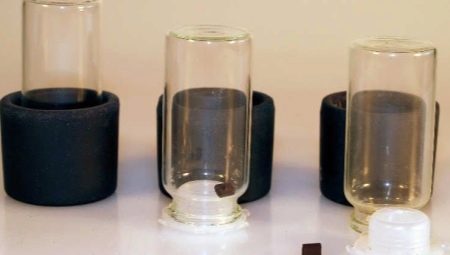The oxidizer is an environmentally friendly device. Such a device is usually used for aeration of water as an alternative to a compressor in small artificial reservoirs. It is noteworthy that the oxidizer functions absolutely silently.

Appointment
Using an oxidizing agent, oxygen can be obtained by decomposing hydrogen peroxide into its constituents: water and oxygen. The unit contributes to the saturation of aquarium water with this useful gas; its use is relevant in small tanks or in those where a lot of plants grow. At night, they tend to actively absorb oxygen, as a result, choking can occur in fish, often leading to their death.
Usually, the fish respond very favorably to the work of the oxidizing agent, especially goldfish, apistograms, as well as discus fish.
Experienced aquarists probably know well how difficult it is to suspend the destruction of hard growths on the fish’s head or get rid of the “Asian”. The oxidizing agent is successfully coping with both problems.
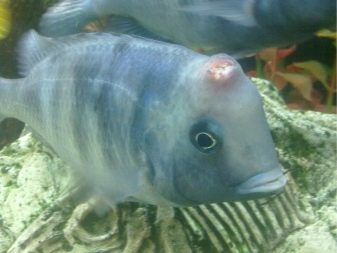
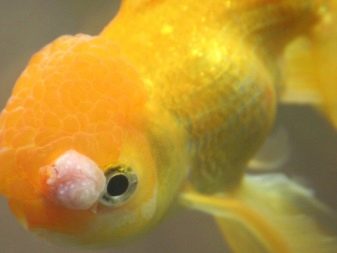
It is noted that its use helps to reduce the concentration of nitrites in an artificial reservoir, oxidizes the uneaten food residues, due to which the appearance of bottom organics slows down. This, in turn, prevents the appearance of a dangerous flip flop and thread in a pond, and blue-green algae does not even tolerate the action of the device. Thus, the device contributes to the fight against the growth of algae, but at the same time does not have a toxic effect on the fish and does not violate the biocenosis of the reservoir.
According to instructions, the use of the device greatly improves the adaptation of newly purchased fish to the habitat, therefore, the device is especially effective when quarantining. The need for an oxidizing agent also often arises in residents of small settlements distant from the metropolis, as well as in people who came with their pets to the country. It is no secret that in such places power outages often occur, and the compressor cannot produce aeration of water, which leads to the death of the inhabitants of the aquarium.
In addition, even the highest quality aerators make a hum, this often causes discomfort, especially when the artificial pond is located in a bedroom or a children's room. In this case the use of an oxidizing agent will be the surest solution.

The main advantages of using the device include:
- enrichment of water in the aquarium with molecular oxygen;
- lack of need for a source of electrical energy and wiring;
- inhibition of pathogenic microflora - the simplest microorganisms, bacteria and dangerous fungi;
- oxidation of nitrites and other decay products;
- highly effective bio-purification of water.
All this helps to improve the quality of water, and consequently, has the most favorable effect on the health status of the inhabitants of the aquarium, helps to alleviate the condition of fish affected by bacterial diseases, and increases the redox potential of the reservoir.
Device
The oxidizing agent includes several elements:
- glass container;
- catalysts;
- cap with several holes;
- clay / ceramic base.
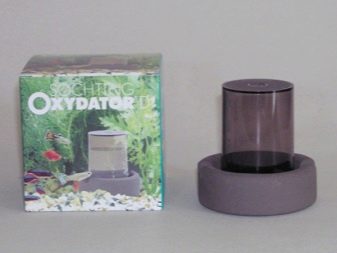
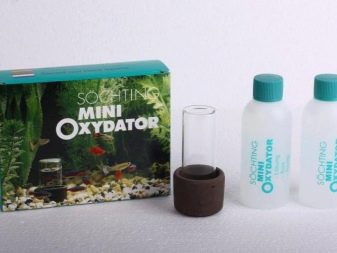
The principle of operation of the device is simple: Prepared hydrogen peroxide is poured into a glass tank, covered tightly, and then placed in a clay base. After that, you can safely use the installation - it already works. When interacting with catalysts, peroxide decomposes into oxygen and ordinary water, oxygen immediately begins to squeeze peroxide out of the tank, and it flows out through the holes in the cap, where it reacts with ceramic elements, which also have the property of catalyzing chemical processes. Thus, another decay into water and gas occurs.
During these processes, a lot of atomic oxygen and molecular microbubbles penetrate into the water, they contribute to the destruction of fungi, parasites and bacteria, and enhances the therapeutic and prophylactic effect on the aquarium fauna.
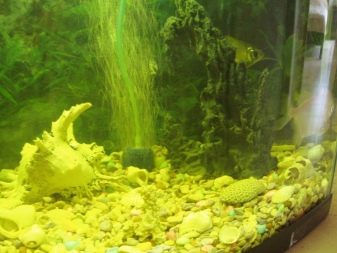
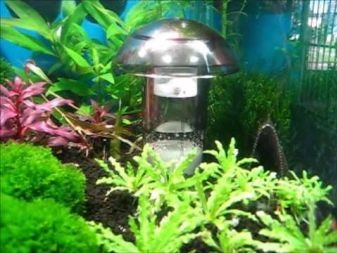
We draw attention to the fact that during the action of the oxidizing agent peroxide itself does not enter the tank, thus, the negative effect of the reagent on hypersensitive fish is completely eliminated.
With frequent switching on, the oxidizer is usually set to the weakest power - they include only 1 catalyst and are charged with a 3% hydrogen peroxide solution. If there is a need for the treatment of aquatic inhabitants and the destruction of algae, it is better to install a pair of catalysts, as well as pour a more concentrated drug.
Kinds
Let us dwell in more detail on the features of the use of oxidizers of various types. MINI oxidizer - this device is designed for installation in tanks with a capacity of not more than 60 liters.
Typically, such devices are optimal for the forced transportation of fish over long distances. The dimensions of this oxidizer are small - no more than 6 cm in length and about 4 cm in diameter, the volume of the tank for pouring hydrogen peroxide is 20 ml. This device produces very small, almost microscopic bubbles, which can be noticed only by looking closely.
If you see that there are none at all, it means that the peroxide is fully developed, and you need to add a new solution.

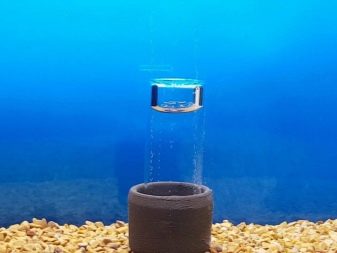
Oxidizer D optimal for a 60-150 liter tank, installation dimensions 8.5x8.5 cm, a vessel for filling with peroxide holds up to 125 ml of reagent. Oxidizer A It is used for large aquariums with a volume of 150-400 liters, and if the aquarium is more capacious, it is recommended to install 2 devices at once.
The diameter of the installation is 9 cm, height -18 cm, the capacity of the vessel is 250 ml. Oxidizer W is the most powerful device designed for artificial reservoirs with a volume of over 600 l, the diameter of the device is 15 cm, height - 18 cm, and the capacity can hold up to 1 l of peroxide.
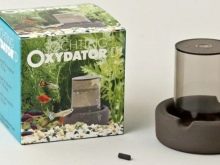


DIY making
If desired, the oxidizer can be made with your own hands. To do this, you will need:
- unpainted clay container with a narrow neck;
- champagne cork;
- hydrogen peroxide solution.
The sequence of steps includes simple steps.
- The cork must be cleaned of wire and cut a piece of the right size.
- The cut piece with a knife is adjusted to the diameter of the neck of the selected ceramic vessel.
- Then in the center of the cork you need to make a small hole. To do this, you can use the thinnest drill or thickest needle.
- Peroxide is poured into the vessel, after which it is tightly sealed with a cork.
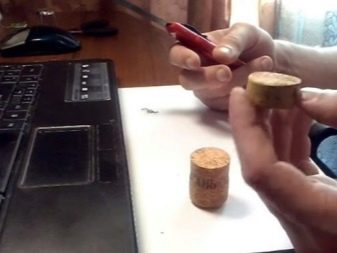
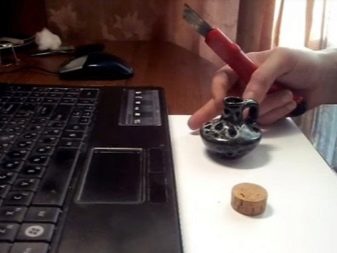
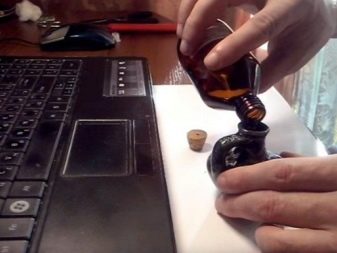
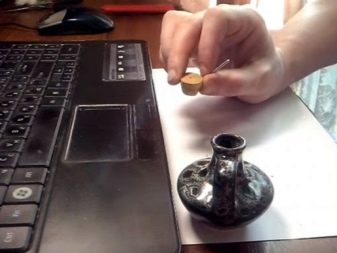
In the course of these simple manipulations, an oxidizing agent, ready for use, is obtained that can be used in an aquarium. If you do not find a clay vessel, then you can take a container of another material, as a catalyst inside you will have to add clay shards or pieces of basalt. If you additionally decorate home-grown oxidizer with driftwood or artificial plants, then it will become not only an effective device that saturates water with oxygen, but also decorates any artificial pond with its decorative look.
On how to make an oxidizer with your own hands, see further.
